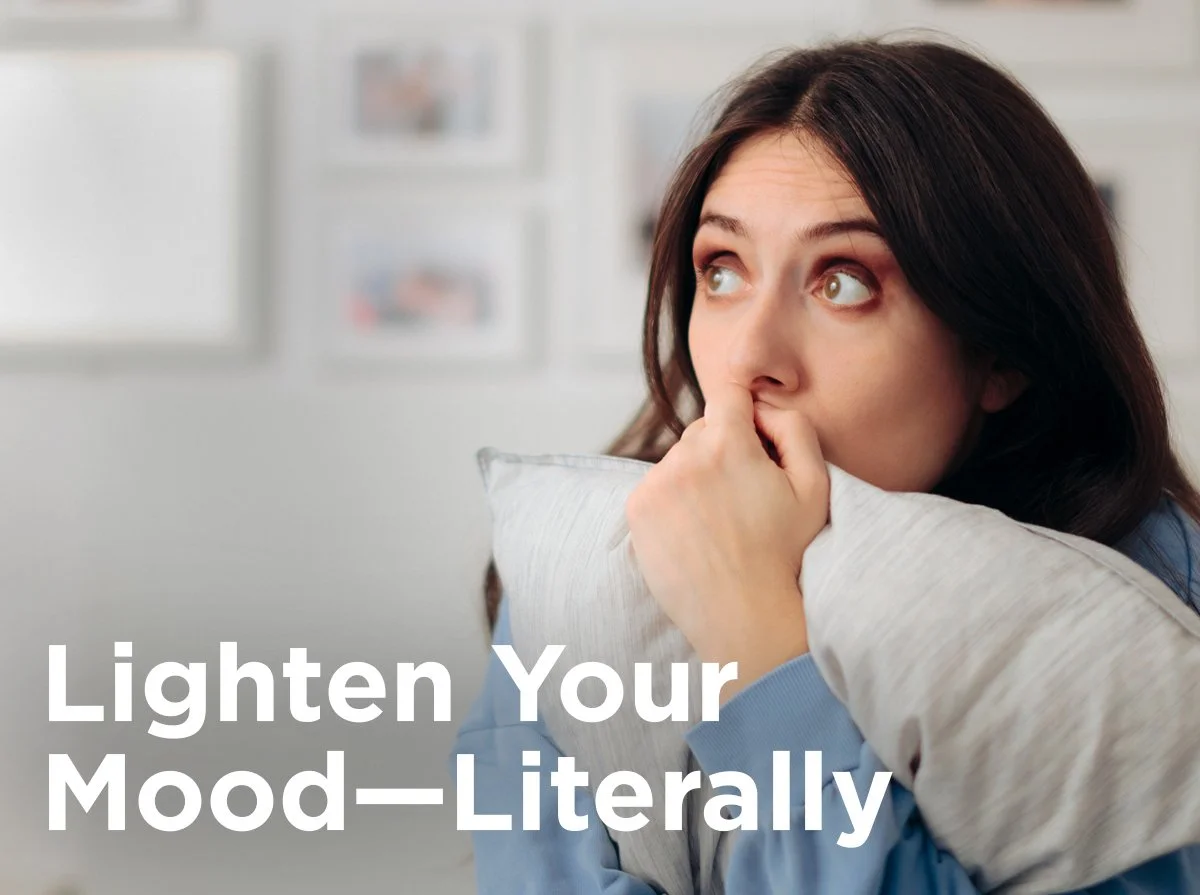Lighten Your Mood—Literally
It’s finally springtime! The days are getting longer, the sun is shining more often, and I feel like I can get so much more done! I thought it might just be my imagination making me feel this surge of energy, but then I decided to do a little research.
I was already familiar with seasonal affective disorder (SAD), a mood disturbance that can cause symptoms of depression during certain times of the year (most often winter). What I didn’t know is that one of the most effective treatments for SAD is light therapy! Simply being exposed to a bright light (one that mimics daylight) for an hour after waking from sleep can dramatically reduce those dark symptoms. While most of us don’t suffer from this clinical disorder, many of us, in fact most of us, are impacted by light, not only physically, but psychologically.
We’ve explored before the color spectrum of light and discussed color temperatures and the Kelvin scale. Lower color temperatures (1000K–3000K) are considered warmer and cast a more yellow or amber hue. The higher the color temperature (4000K +), the more cool or blue the light. We’ve also noted that blue, or cool, light can suppress the production of melatonin and negatively impact your sleep cycle. But did you know that same light can also be energizing and motivating during daylight hours? It can improve concentration and accuracy when used in task-oriented settings. While you want to limit your exposure to these cooler, bluer lights the closer you get to bedtime, you can maximize your productivity during work hours with color temperatures of 5000K or more.
Even though your workspace may be equipped with bulbs of 5000K or more, you’ll still want to get outside for that lunchtime walk. It’s proven that regular exposure to natural daylight can improve overall happiness. It can even make us healthier! According to the National Center for Biotechnology Information, sunlight is the main source for producing vitamin D in the skin and is the primary source of vitamin D for the body. It is estimated that 90% of the daily body requirements are met by sunlight exposure.
As your day winds down and you transition to down time, consider employing bulbs and fixtures in those lower color temperature ranges. The warmer light feels cozier and promotes relaxation. Dimmers can be a great addition to any room, but especially in a dining area. While you might want more light for preparation and setting the table, turning the lights down a few ticks when you sit down can even help you eat less!
Mood is tied to many factors and while light alone can’t solve all things, it can most definitely contribute to an overall sense of wellbeing when thoughtfully planned. Next time you need to replace a bulb, think about how you would like to feel when you’re in that space and choose your replacement with that goal in mind.
Need some help in choosing the right color temperature for your task? Give one of our friendly lighting experts at 1000Bulbs a call at 1-800-624-4488.










